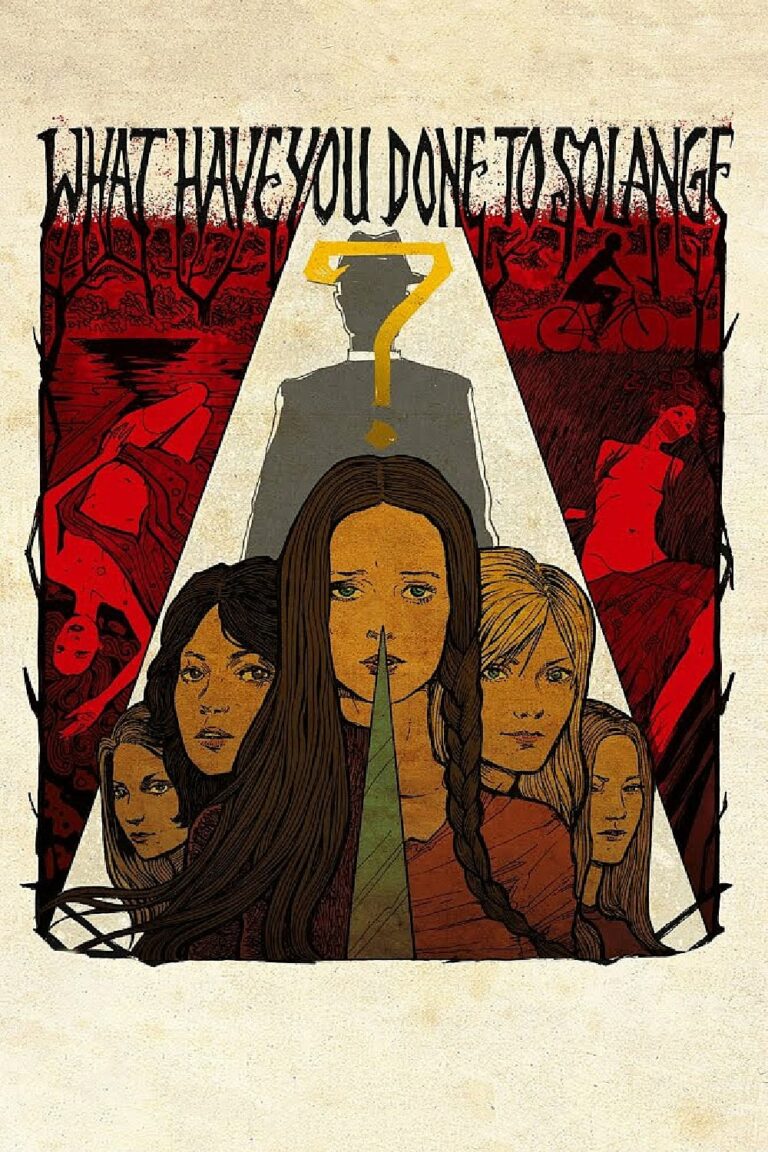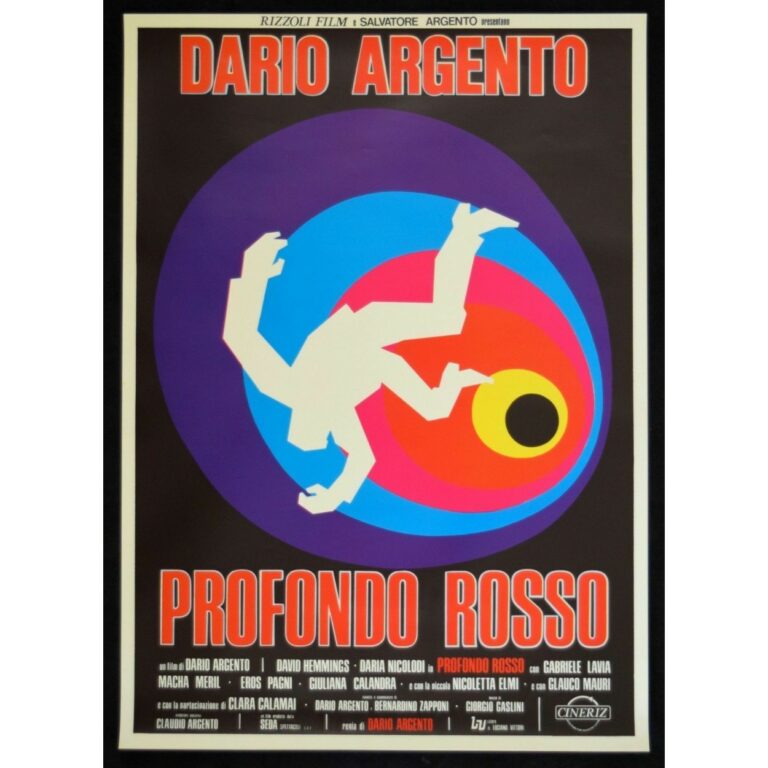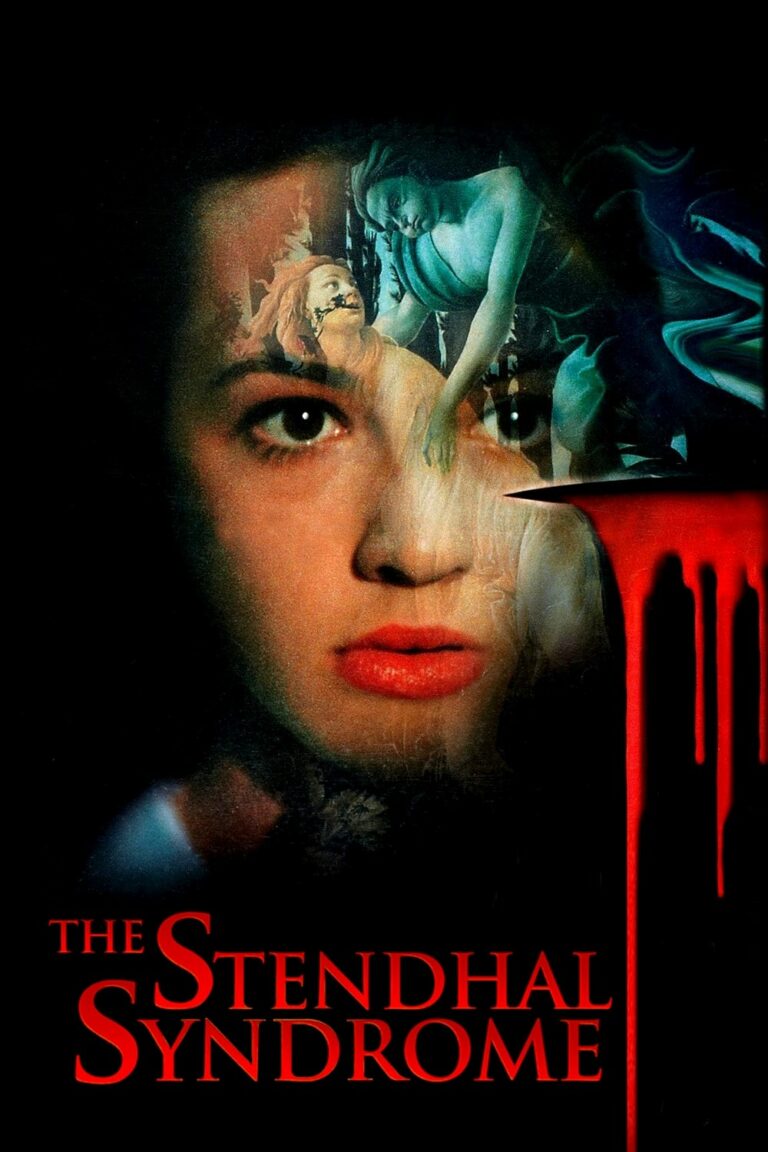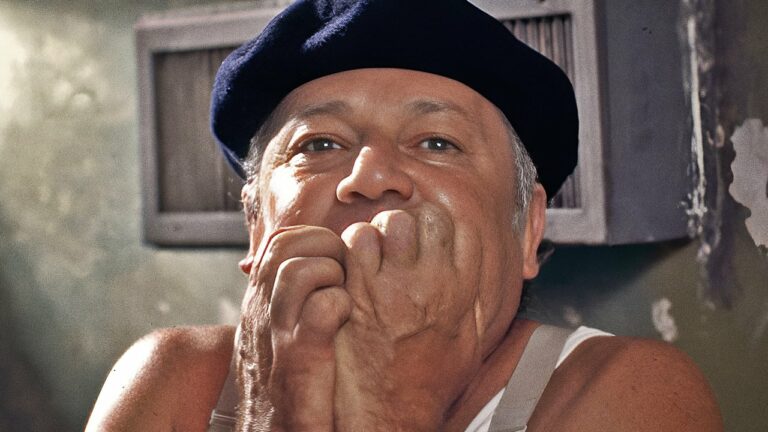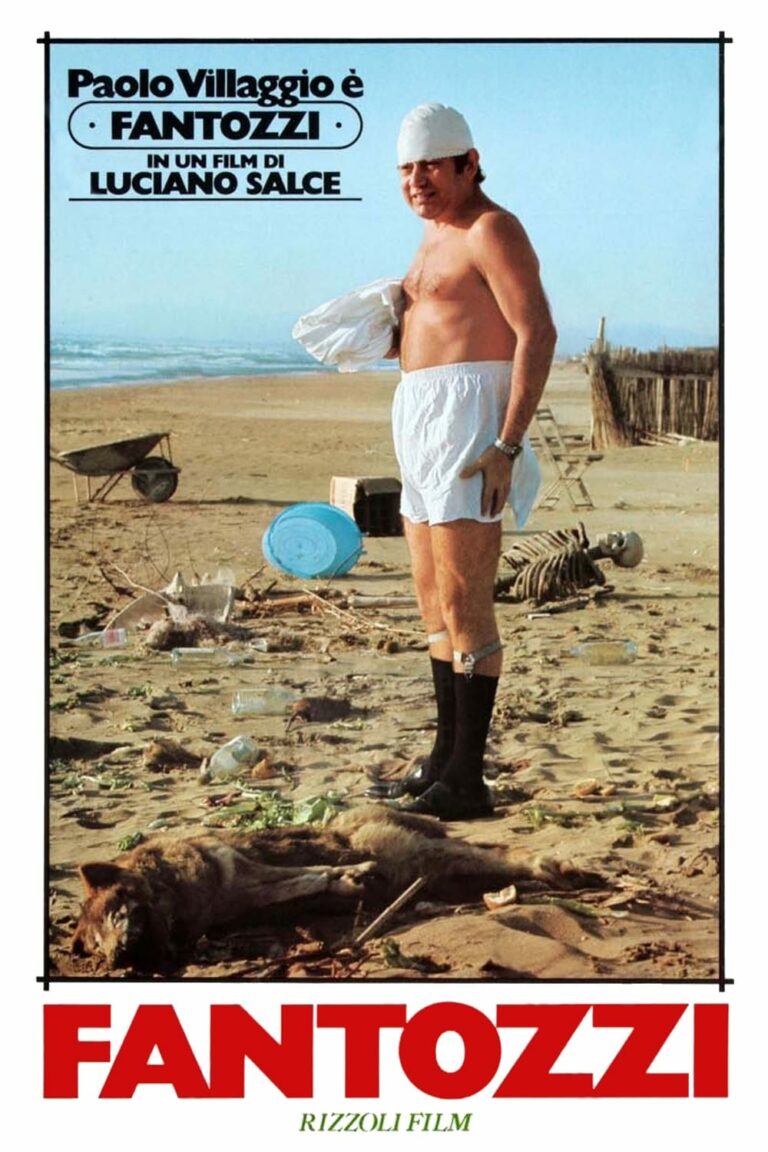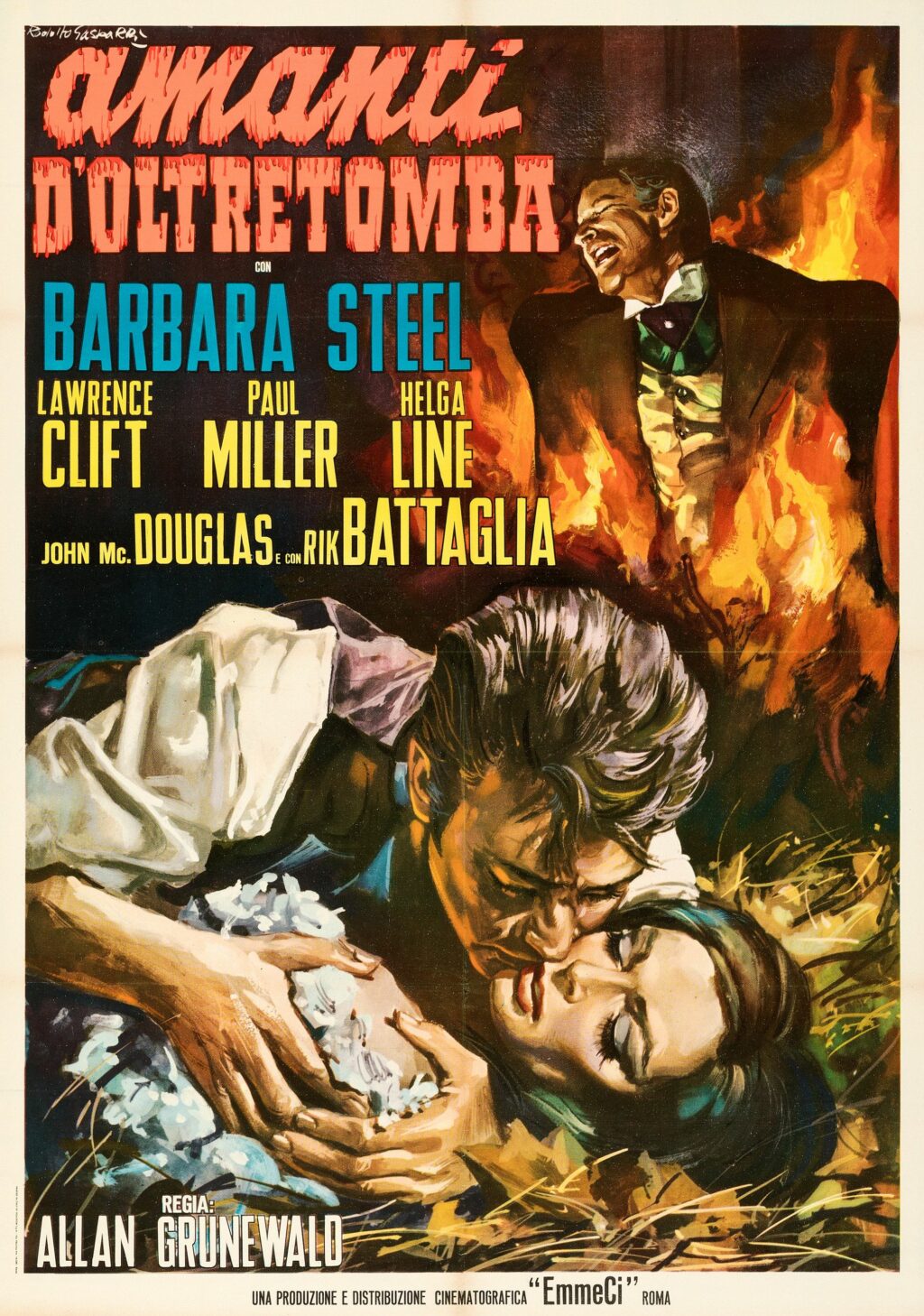
Nightmare Castle (Amanti d’Oltretomba), released in 1965, is a quintessential Italian Gothic horror film that weaves an eerie tale of revenge, madness, and the supernatural. Directed by Mario Caiano and starring the legendary Barbara Steele, this film exemplifies the haunting atmosphere and dark beauty of 1960s Italian horror cinema. With its blend of psychological terror, supernatural elements, and visually striking settings, Nightmare Castle has become a cult classic cherished by horror aficionados worldwide.
Introduction
Nightmare Castle (Amanti d’Oltretomba) stands as a testament to the allure of Gothic horror. Its moody castles, vengeful spirits, and complex characters create a chilling tale that transcends its time. Directed by Mario Caiano, the film showcases Barbara Steele in a dual role, solidifying her status as an icon of the genre. Combining psychological intrigue with supernatural terror, Nightmare Castle remains a masterpiece of 1960s Italian cinema.
Plot Summary
The story revolves around Dr. Stephen Arrowsmith (Paul Muller), a deranged scientist obsessed with control and revenge. Living in a foreboding castle, Stephen discovers his wife, Muriel (Barbara Steele), having an affair with her lover, David (Rik Battaglia). In a fit of rage, Stephen tortures and murders the couple but doesn’t stop there—he harvests Muriel’s blood to conduct experiments aimed at extending his own life.
Stephen remarries Jenny (also played by Barbara Steele), Muriel’s fragile half-sister, who suffers from a mysterious illness. As supernatural events begin to plague the castle, the ghosts of Muriel and David rise to exact their revenge. The film crescendos to a climactic confrontation, blending psychological terror with supernatural justice.
Historical and Cultural Context
The 1960s saw a Gothic revival in Italian cinema, with filmmakers drawing inspiration from Edgar Allan Poe, European folklore, and Victorian literature. Nightmare Castle is a prime example of this trend, showcasing the hallmarks of Gothic horror: decaying castles, forbidden desires, and spectral vengeance. Mario Caiano’s direction captures this cultural zeitgeist, blending traditional Gothic motifs with Italian cinematic flair.
Main Characters
- Muriel Arrowsmith (Barbara Steele): The deceitful yet vengeful wife whose murder sets the story in motion.
- Jenny Arrowsmith (Barbara Steele): Muriel’s innocent half-sister, whose illness makes her a pawn in Stephen’s twisted schemes.
- Dr. Stephen Arrowsmith (Paul Muller): A sadistic scientist driven by greed and a thirst for control.
- David (Rik Battaglia): Muriel’s ill-fated lover, who returns as a ghost seeking justice.
- Solange (Helga Liné): The loyal yet morally ambiguous housekeeper who aids Stephen in his dark experiments.
Themes and Symbolism
1. Revenge Beyond Death
The film explores how vengeance transcends mortality, as the ghosts of Muriel and David refuse to rest until justice is served.
2. Madness and Control
Stephen’s obsessive need for power mirrors the Gothic tradition of exploring the fragility of the human psyche.
3. Innocence and Corruption
The juxtaposition of Jenny’s purity against the dark deeds of Stephen and Muriel underscores the film’s moral dichotomy.
Barbara Steele’s Contribution
Barbara Steele’s performance as both Muriel and Jenny is a highlight of Nightmare Castle. Her ability to portray two vastly different characters—one manipulative and vengeful, the other innocent and vulnerable—showcases her range as an actress. Often referred to as the “Queen of Gothic Horror,” Steele’s presence elevates the film, adding depth and intensity to its narrative.
Visual and Cinematic Style
The film’s visuals are quintessentially Gothic, with shadowy corridors, flickering candles, and a decaying castle that serves as both setting and character. Caiano’s use of light and shadow creates an oppressive atmosphere, while the close-ups of Barbara Steele’s expressive face heighten the film’s emotional impact.
Music and Sound Design
The haunting score by Ennio Morricone enhances the film’s atmosphere, blending eerie melodies with moments of tension. Morricone’s music captures the essence of Gothic horror, accentuating both the suspense and the emotional weight of the story.
Reception and Legacy
Though Nightmare Castle received mixed reviews upon its initial release, it has since gained a devoted following. Critics and audiences alike appreciate its haunting aesthetic, strong performances, and ability to balance psychological depth with supernatural horror. The film has become a staple of late-night horror screenings and film festivals celebrating classic Italian cinema.
Comparison to Contemporary Films
Compared to other Gothic horror films of the 1960s, such as Black Sunday (1960) and The Whip and the Body (1963), Nightmare Castle holds its own as a unique entry. While it shares thematic similarities, its dual roles for Barbara Steele and emphasis on scientific experimentation set it apart.
The Restoration and Home Releases
Modern restorations have brought Nightmare Castle back into the spotlight, with remastered versions available on Blu-ray and streaming platforms. These restorations have allowed new audiences to appreciate the film’s visual beauty and atmospheric storytelling.
FAQs
- Is Nightmare Castle based on a book?
No, the film’s story is an original creation inspired by Gothic horror traditions. - Why is Barbara Steele iconic in Gothic horror?
Steele’s intense screen presence and ability to portray complex characters made her a standout in the genre. - What makes Nightmare Castle a cult classic?
Its blend of Gothic aesthetics, psychological depth, and supernatural elements has earned it a lasting reputation. - Where can I watch the film?
Restored versions are available on streaming platforms and in Blu-ray collections of classic horror films. - How does the film compare to other Italian horror movies?
It is a quintessential example of the Gothic subgenre, balancing eerie storytelling with psychological themes. - What is the significance of the castle in the film?
The castle serves as both a physical and symbolic representation of decay, secrecy, and confinement.
Conclusion
Nightmare Castle (Amanti d’Oltretomba) is a haunting masterpiece of Gothic horror, blending psychological intrigue with supernatural terror. Mario Caiano’s direction, Barbara Steele’s iconic dual performance, and Ennio Morricone’s atmospheric score create an unforgettable cinematic experience. Decades after its release, the film continues to captivate audiences, standing as a testament to the enduring power of Italian Gothic cinema.
